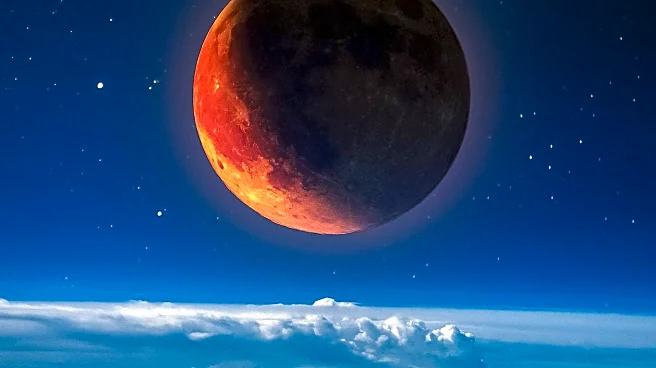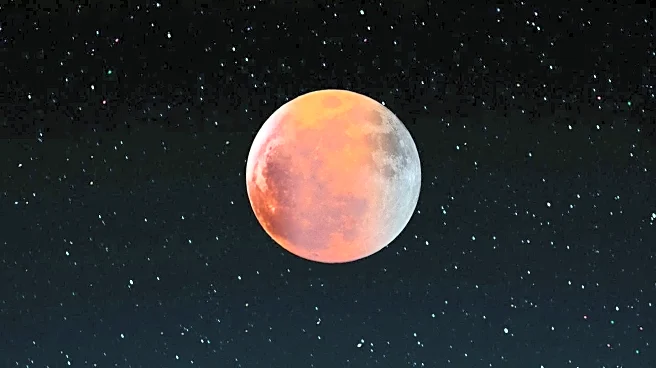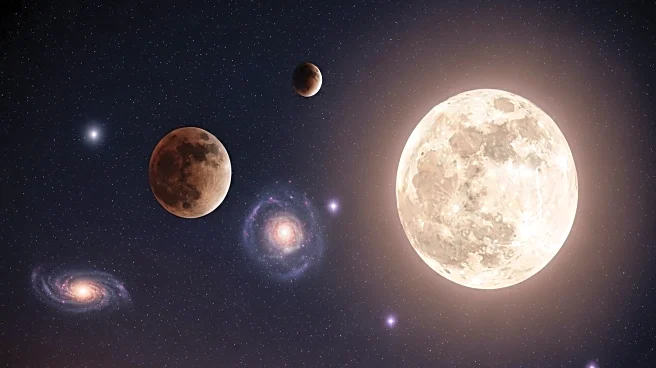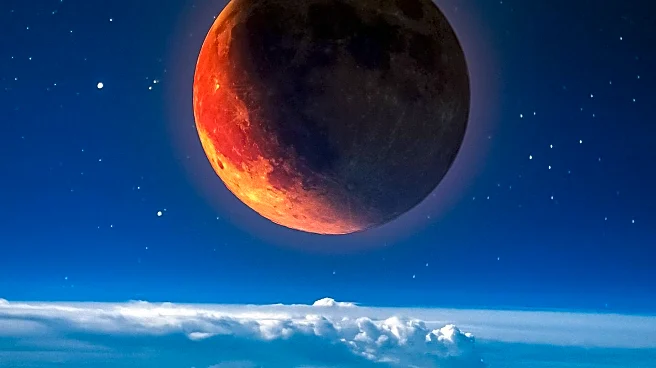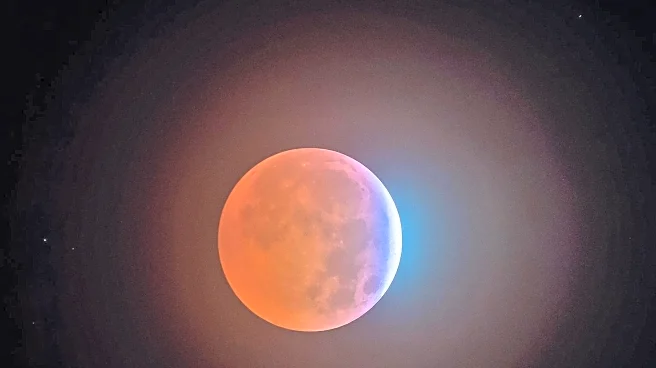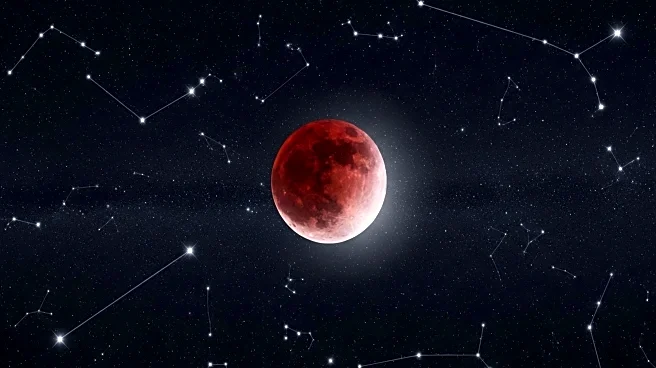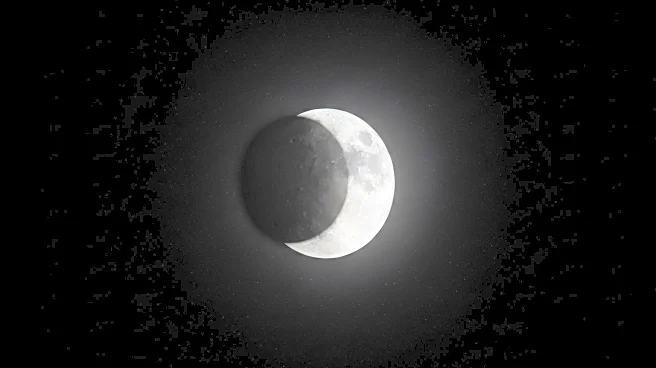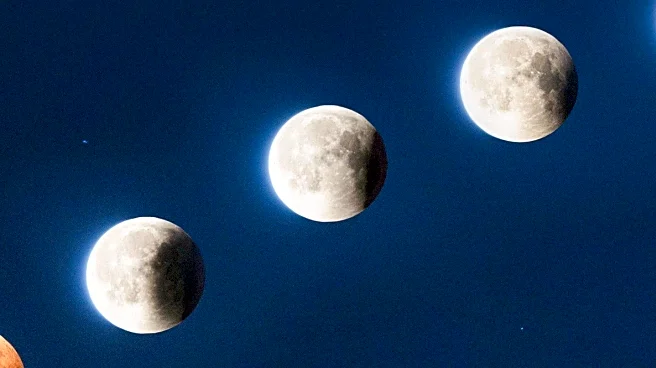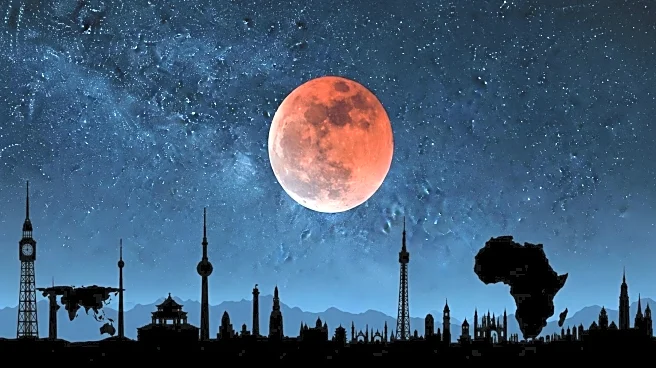What's Happening?
The Corn Moon, a full moon traditionally associated with the corn harvest in North America, will rise on September 7, 2025. This year, it coincides with a total lunar eclipse, often referred to as a 'blood Moon' due to the reddish hue the Moon takes on during the eclipse. The eclipse will be visible in parts of Europe, Africa, Asia, and Australia, but not in North or South America. The event will also feature a close visual pairing with Saturn, as both celestial bodies will rise in the eastern sky around the same time. This astronomical event offers a unique opportunity for stargazers to witness the Moon and Saturn in close proximity, with the best viewing times occurring on the evenings of September 6-8.
Why It's Important?
This celestial event is significant for both amateur and professional astronomers, as it provides a rare opportunity to observe a total lunar eclipse and a planetary conjunction simultaneously. The 'blood Moon' phenomenon is a captivating sight, drawing interest from the public and fostering a greater appreciation for astronomy. Additionally, the event highlights the cultural and historical significance of the Corn Moon, which has been celebrated for centuries. The visibility of Saturn alongside the Moon adds an extra layer of interest, as Saturn is nearing opposition, making it particularly bright and visible in the night sky. This event encourages public engagement with science and can inspire educational activities related to astronomy.
What's Next?
Following the Corn Moon and lunar eclipse, Saturn will reach opposition on September 21, 2025, offering optimal viewing conditions for the planet. As the Moon wanes, stargazers will have a clearer view of Saturn and its rings, providing an excellent opportunity for observation with telescopes or binoculars. The coming months will also feature a series of supermoons, enhancing interest in astronomical events. These occurrences are expected to continue drawing public attention to the night sky, promoting ongoing interest in celestial phenomena and potentially increasing participation in astronomy-related activities.


